Winter is a busy time for production at the farm. Seeding, cultivation, and harvest moves under the cover of 24,000 square feet of greenhouse space. The propagation house is transformed into a patchworked landscape of boxes filled with potting soil for microgreens production. Hearty winter greens, such as kale and Swiss chard are in the grow house, and spinach fills the two unheated mobile tunnels. The Wash and Pack facility is the mecca for winterlong produce storage; washing and packing; and palletizing orders for donation and distribution throughout the region. We celebrate our fifth winter of year-round farming with the following photo essay.
– Amy Wu
Jenny Linger, Co-Manager of Vegetable Production, contributed to this piece

Freshly transplanted Salanova that when harvested will blend to make a colorful lettuce mix.
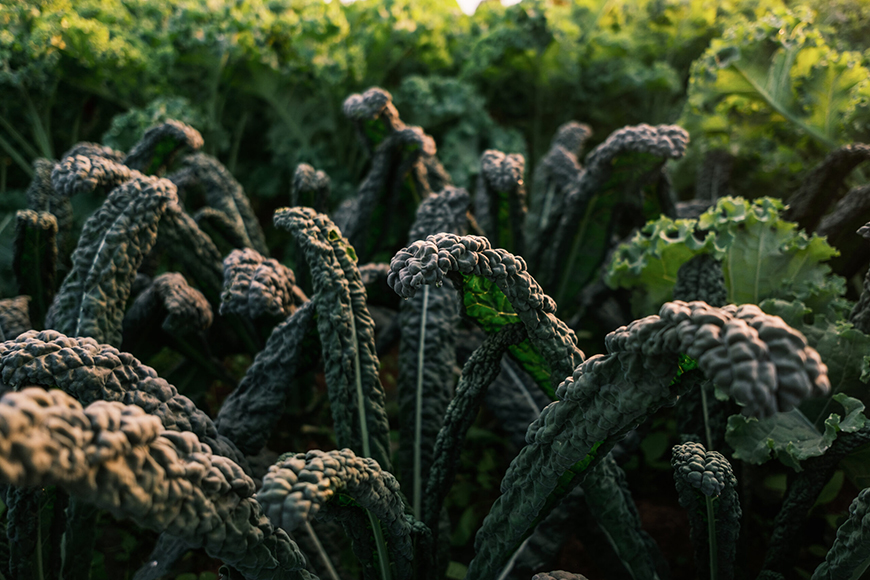
Kale is a favorite hearty brassica that offers an abundance of harvests throughout the winter from the heated (minimum of 35 F) high tunnel.
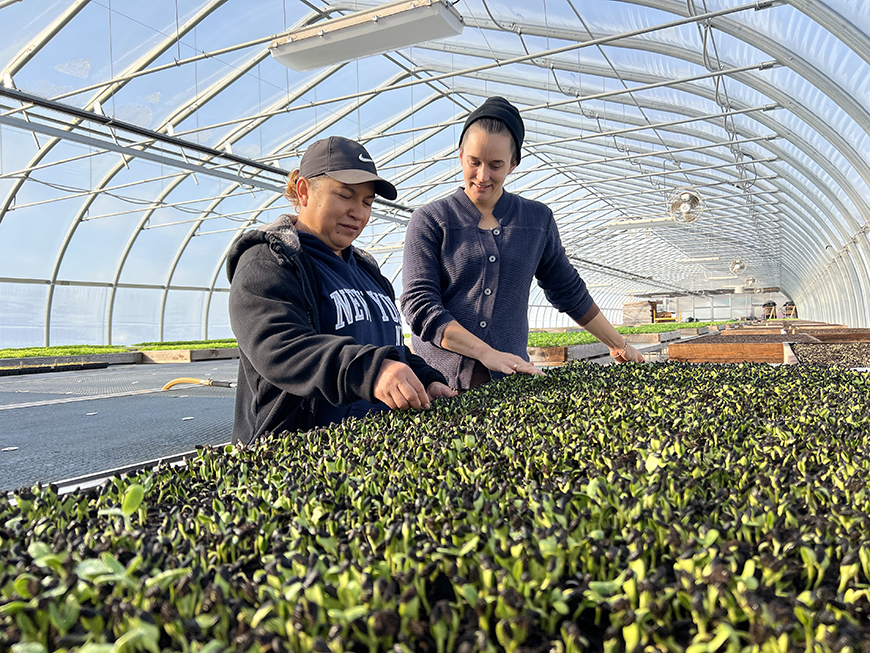
Sunflower shoots were introduced for the first time to the box seeding mix. After the seed is soaked for a few hours and sown in a shallow bed of potting mix, it will take an average of 10 to 16 days to grow a vibrant shoot. The variety planted at the Farm Hub is the Black Oil Sunflower, a seed available organically and known for its sweet, nutty taste.
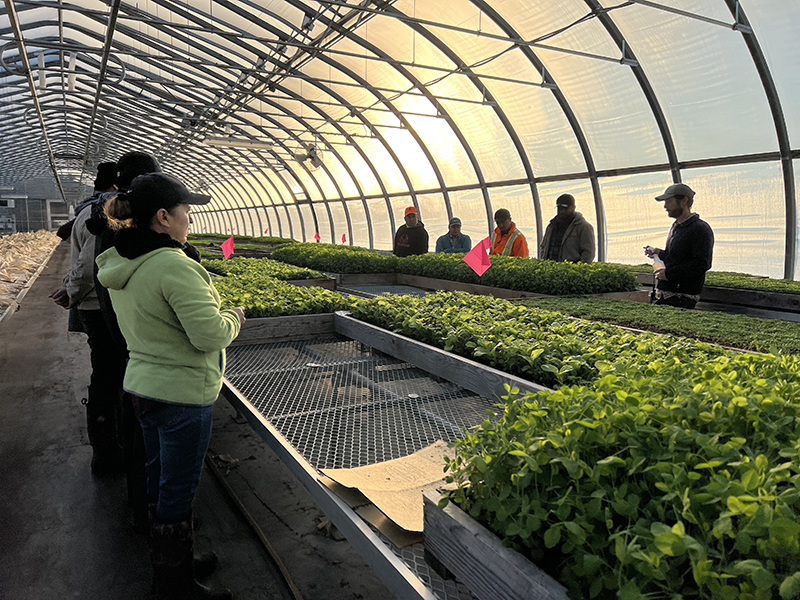
The vegetable production team meets first thing every morning to review the plan for the day ahead.

Microgreens, like the pea shoots here, are harvested just above the soil surface to maximize harvest without picking up soil. For most microgreens, the cycle of seed to harvest ranges from 14-30 days. On a weekly basis, the vegetable production team cuts the 4-6” microgreens with a sharp serrated knife just above the soil. Shortly after harvest, they are transported to the Wash and Pack where they are bagged into individual pack sizes for our donation partners.
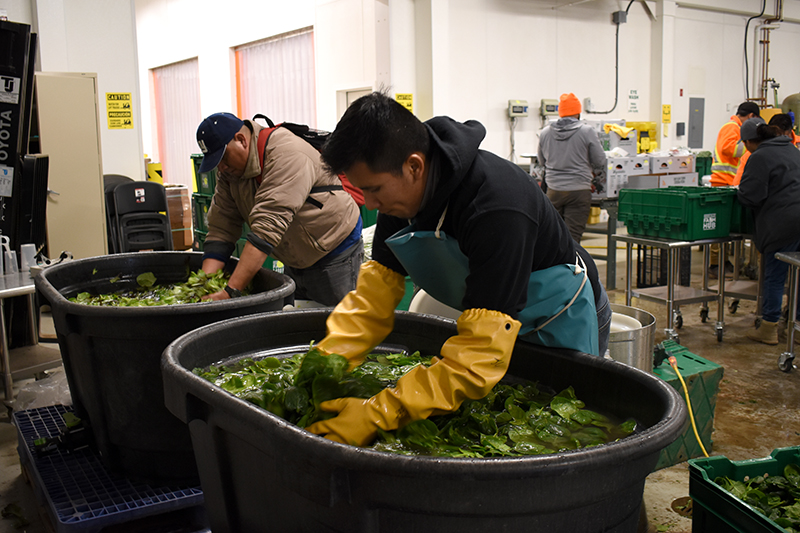
When the greens arrive in the Wash and Pack, they are dumped into large rubber bins and dunked into water, loosening and rinsing off dirt or insects.

Rosa Villegas, Vegetable Production Co-Manager, inspects a freshly washed bin of spinach.

Freshly washed spinach awaits to be packaged into one-pound bags.

The two unheated mobile tunnels house most of the winter spinach, including a research trial with Cornell Cooperative Extension looking at the benefits of foliar calcium application in spinach.
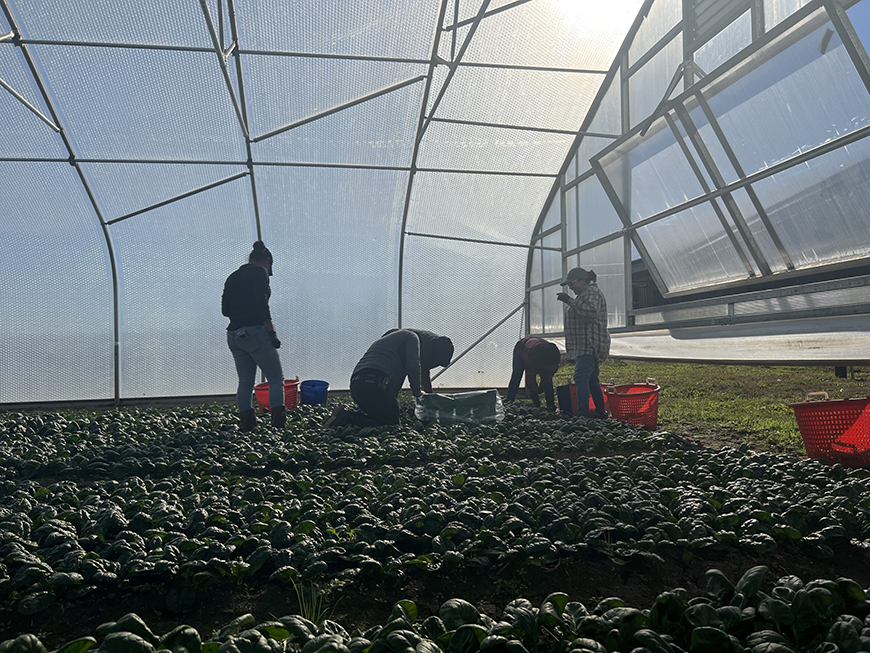
The production crew harvests spinach from a hoop house.
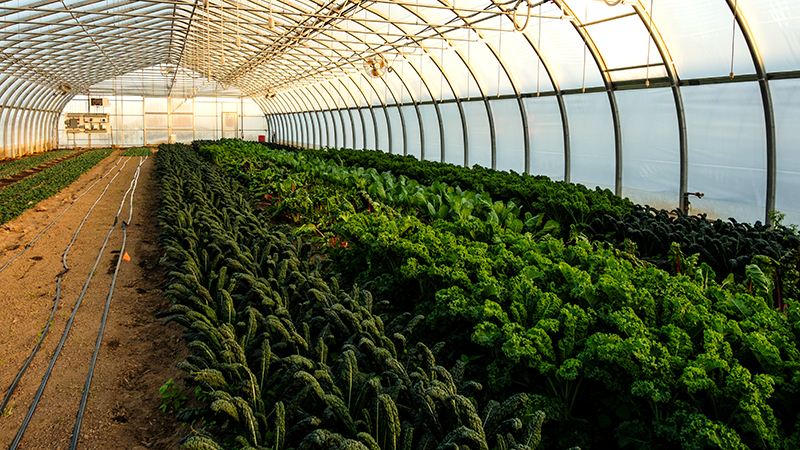
The grow house was planted with heartier winter greens like kale, collards, swiss chard, and spinach, as well as cilantro and Salanova lettuce mix.

The greenhouse is a focal point of winter farming as it provides a protective environment for greens through the arc of frigid Northeast winters. In October, the veg team begins seeding a variety of microgreens such as arugula, parsley, pea shoots, and Premium braising mix. The heated greenhouses are kept above freezing between 35- and 45-degrees Fahrenheit, which can feel balmy against the frosty outside air.
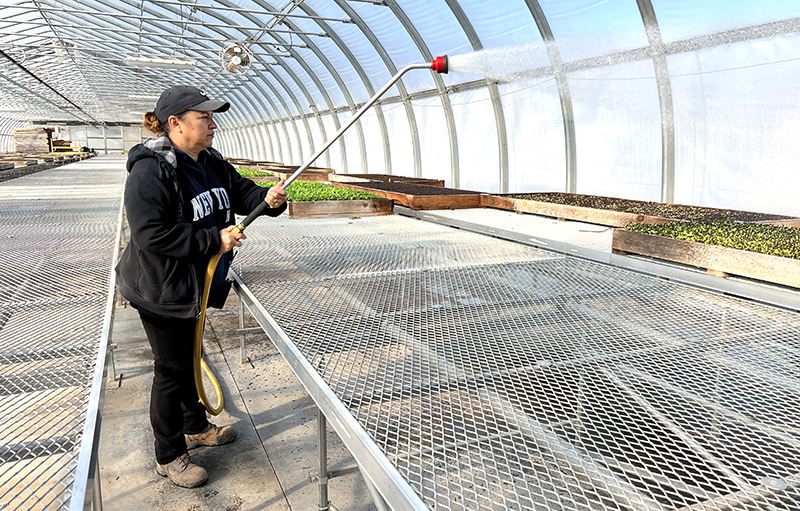
Watering is a critical and sometimes challenging part of winter greenhouse production. The seeded boxes are watered one or two times a day, seven days a week, to ensure even germination and tender growth. They are watered with a combination of hand watering with a wand and the Aquaboom, a traveling overhead misting system.
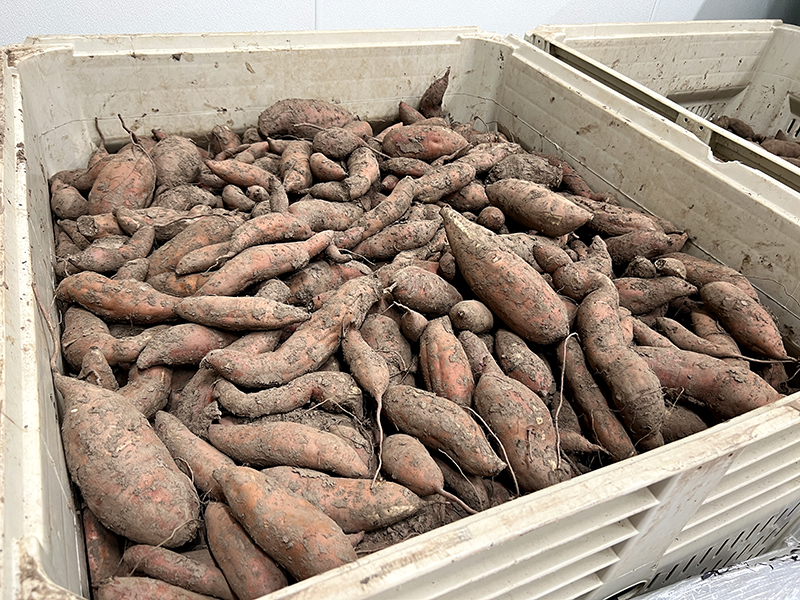
Root vegetables are stored dirty with the soil on them from harvest to help maintain moisture, prevent contamination before storage, and ease labor demands within a relatively short window. Sweet potatoes especially benefit from a coating of soil in the curing process, which takes a few weeks of very warm and humid storage conditions.

Root vegetables, such as these Red Maria potatoes, have been stored in bins in climate-controlled coolers in the Wash and Pack. Every Monday, the veg team processes between 10,000 to 12,000 pounds of stored produce, mainly using the root washing line and sorting table.
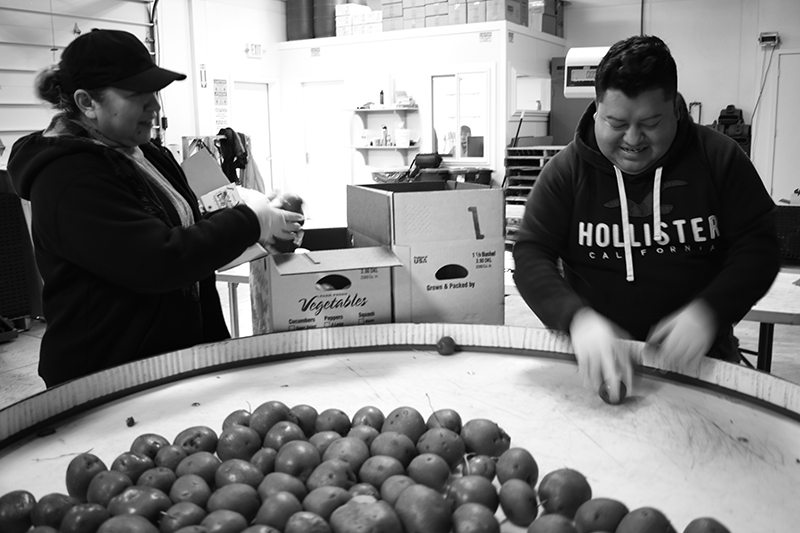
In the root washing line, potatoes travel from storage bins and are dumped onto a belt conveyor where they are sprayed down. When they enter the root washer, they travel through spinning brushes and pressurized streams of water which rinse dirt from their skin. As they exit, they land on a circular sorting table that constantly rotates. Vegetable production team members pack cleaned produce into cases while picking out any soft, rotting, or defective produce for the compost.

The vegetable production team wears rubber and nylon gloves to prevent injury and stay insulated from the cold wash water temperatures.
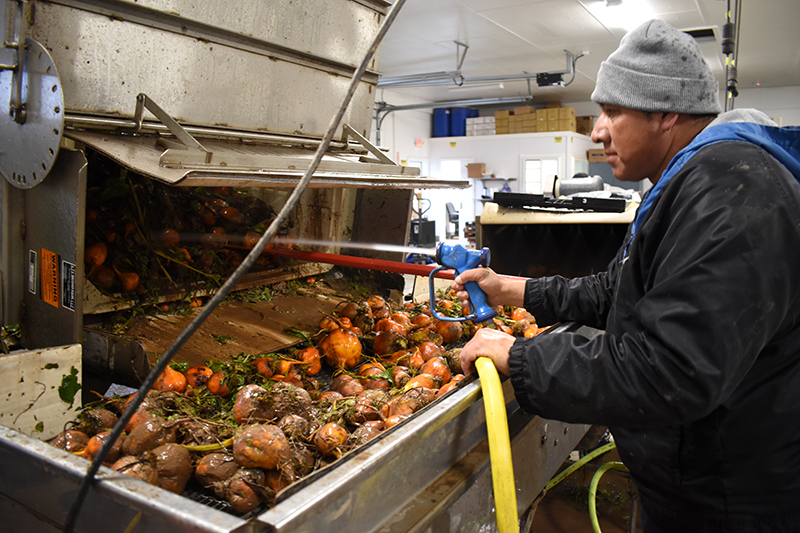
Samuel Saucedo hoses down golden beets as they spill out of the bin dumper. Beets can be stored for up to seven months at 35 degrees Fahrenheit. Throughout the winter, they are taken out a couple of bins at a time to be washed, packed, and distributed.
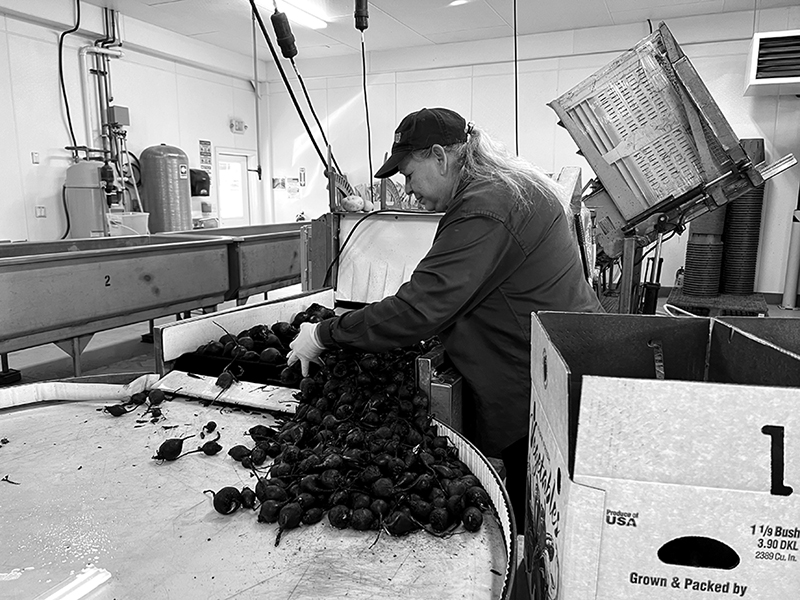
Victoria Tellez Salazar packs beets as they come out of the root washer.
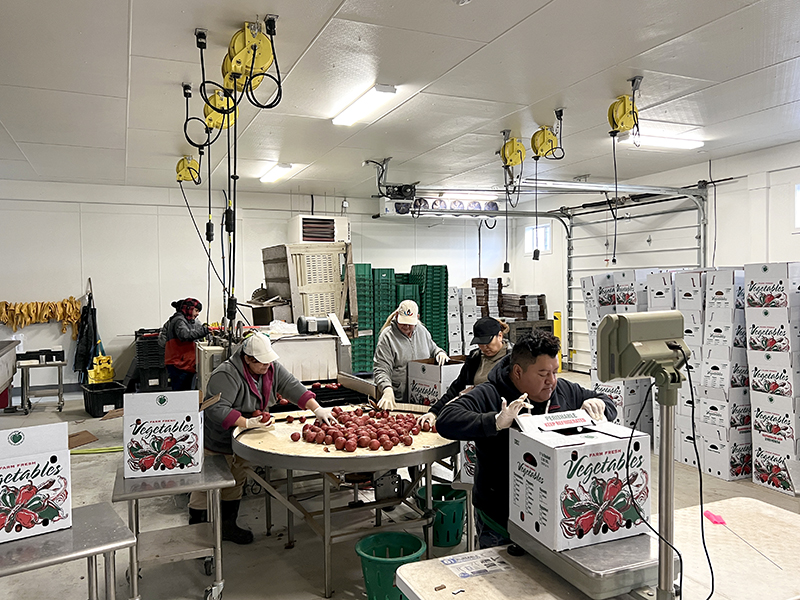
The vegetable production team spends nearly 2,000 person-hours throughout the winter washing, sorting, and packaging stored roots, cabbage, winter squash, garlic, and onions.
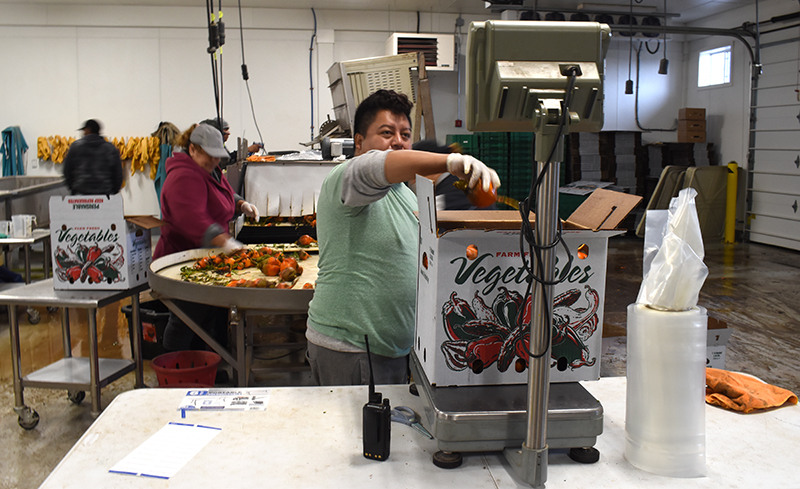
Eustacio Quino weighs out golden beets into 40-pound cases.

The vegetable production team builds hundreds of cases to fill with produce before every washing.
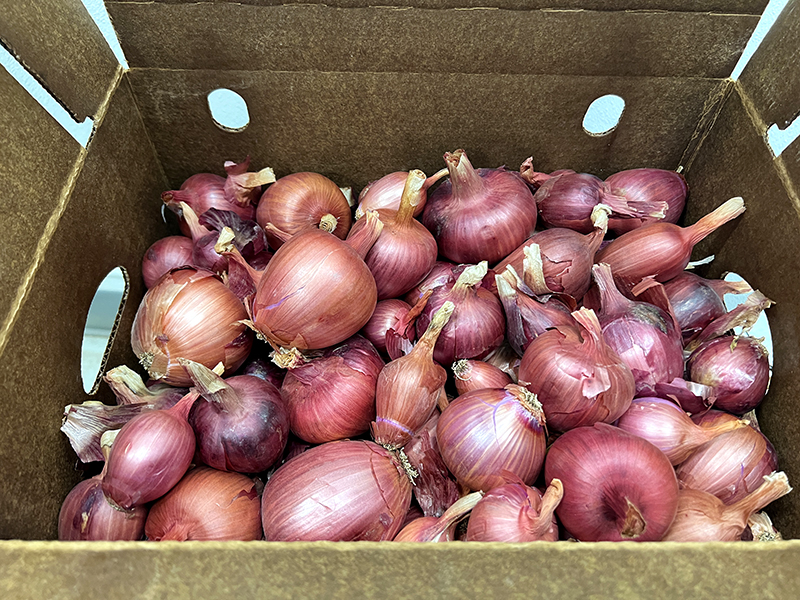
Alliums, like onions and garlic, are stored in cool and dry conditions throughout the winter.

Production team members bag and weigh microgreens and prepare them for distribution.
During the season the Farm Hub has been donating an average of 11,000 pounds a week of produce, including greens.

After being weighed and then bagged, bags are counted and placed into lined boxes, which are then palletized and placed in the 35-degree Fahrenheit cooler until delivery.

After the microgreens are harvested, the vegetable production team cleans up the boxes, removing stems and root systems in the top few inches of soil. Fresh potting soil is then refilled as seedbed for the next crop of microgreens.
